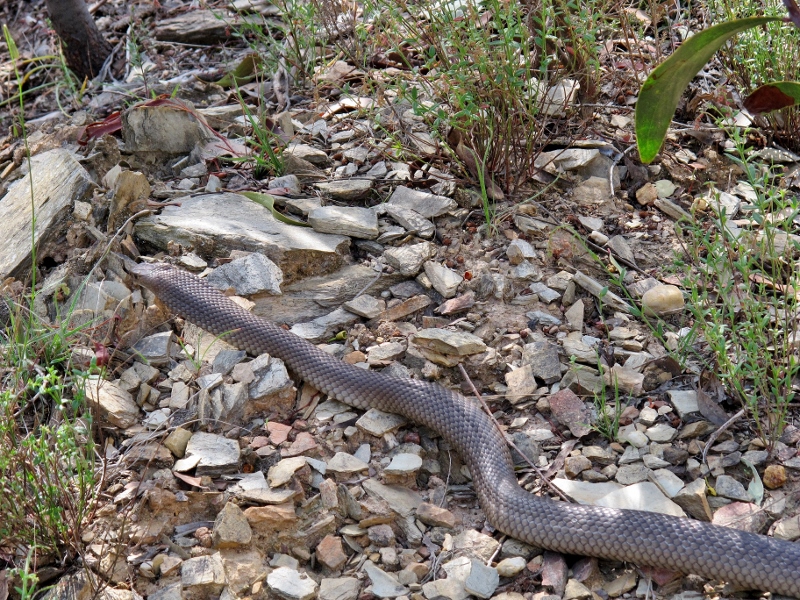The photo below shows an Eastern Brown snake [Pseudonaja textilis—‘brown’ is a pretty broad description: the snake can be any shade of brown from almost orange to nearly black] crossing the Irishtown Track in the Fryerstown forest last week. The warmer weather is bringing snakes out, and the Brown is one of the more common ones in our region, particularly around towns and settlements: it has enthusiastically incorporated mice and rats into its diet, which has enabled it to adapt more easily to human environments.

‘Deadly reptile slithers towards the urban sprawl’. Populist hysteria doesn’t mesh with the facts: about two Australians per year die from bites, and the majority are people trying to attack or handle the reptile.
The Brown is highly venomous—but it’s not keen on attacking anyone as big as a human, and like the pictured specimen, will always try to get away if it can. If cornered however, it is extremely nervous and aggressive. The moral therefore is, don’t approach any snake, and dress appropriately if going into areas where one might be met. The great majority of snake bite deaths have arisen when people unwisely take on the reptile [if you want to get it away from the house, call a snake catcher]. It is, of course, illegal to kill snakes, which are protected animals. For pets, the best advice is, don’t let them roam around the bush ferreting into holes; in any case, dogs should be on a leash in the Diggings Park.
Common sense is the best defence against snake bite, but unfortunately hysteria is more common than common sense, as witness a 2013 Sydney Telegraph headline: ‘Snakes are raiding the suburbs…Fatal snake bites will become a tragedy repeated this summer as the deadly reptiles—thriving in hot conditions—slither towards the urban sprawl.’ This horror movie scenario doesn’t fit well with the fact that on average less than 3 people per year over the whole of Australia die from snake bite: far more people are killed by bee stings…
…And the odds are stacked against the snake: more than five million reptiles are killed by cars in Australia every year. According to the Australian Museum, ‘countless’ Brown snakes perish in this way, ‘both accidentally and on purpose’.




 Click on image for info/order page
Click on image for info/order page Click on image for info/order page
Click on image for info/order page Click on image for info/order page
Click on image for info/order page




















